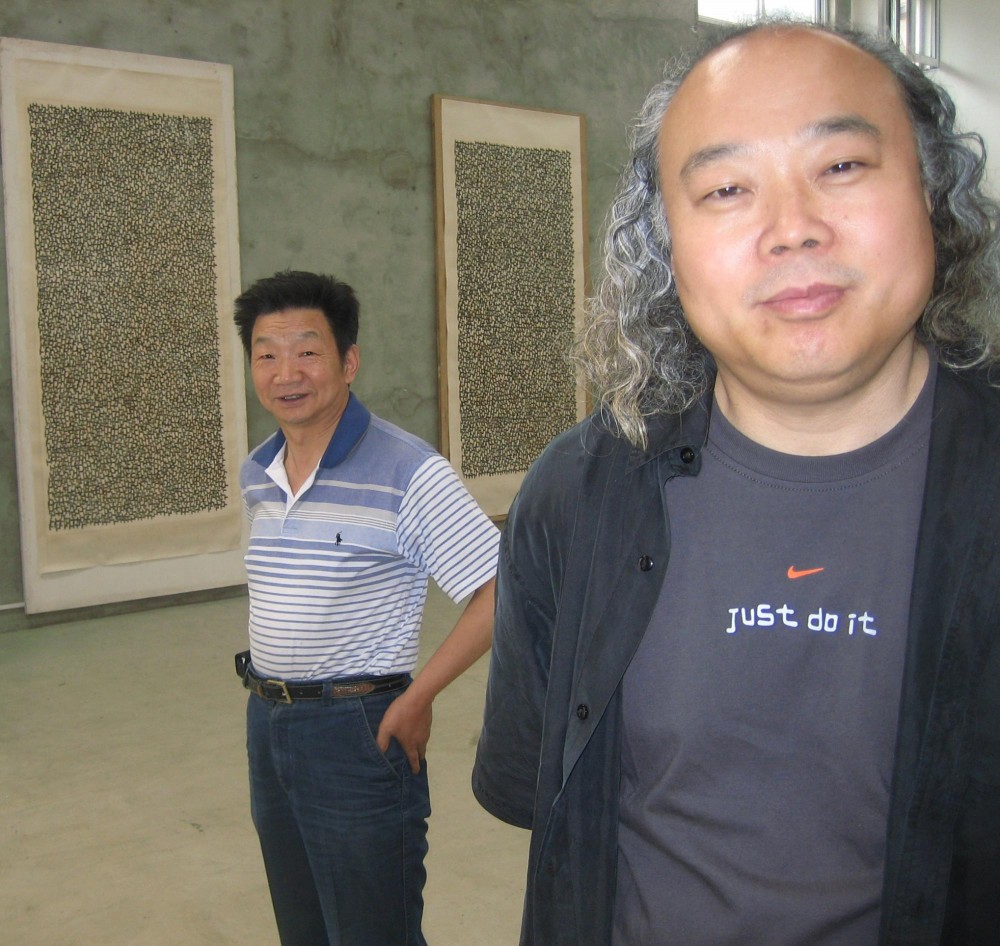WHAT: âÄúEncounters: The Past Re-configuredâÄù WHEN: Now – Oct. 8, WHERE: The Nash Gallery in the Regis Center for Arts, West Bank TICKETS: Free In the In-Flux room of the Regis last week, a panel of artists and experts sat before a packed room. Among the panel were two preeminent modern artists from China, Li Shuan and Liu Xuguang, both professors at the Beijing Film Academy whose works are the subject of the Nash GalleryâÄôs new exhibition, âÄúEncounters: the past re-configured.âÄù While the show and panel consider ChinaâÄôs tumultuous past, much of the focus rests on the future. The art in the exhibit is so referential to Chinese culture that the viewer âÄúneeds to know the background of the art, otherwise it doesnâÄôt make sense,âÄù explains Dr. Wang Chunchen, a curator at the Chinese Central Academy of Fine Arts in Beijing. For example, at first glance the âÄúMarksâÄù series by Liu âÄî who bears an eerie resemblance to a Chinese Ben Franklin âÄî are simply pieces of white rice paper filled with a sea of markings, each comprised of two simple dashes. These dashes, when looked at more thoroughly are really the two strokes of the Chinese character âÄú人,âÄù meaning âÄúpeopleâÄù or âÄúperson.âÄù With that understanding, the painting becomes not just meaningless marks on paper but a mob of people with their heads bobbing together in the crowd. The tidy square pictures appear to be sovereign countries of various sizes scattered on the walls and spilling onto the floor. The characters, done in a mixture of rust and ink, begin to stand out individually and yet remain unmemorable, just as if one was looking at a crowd. Mr. LiâÄôs own series, âÄúHuman Existence,âÄù is a collection of intertwined figures pushed deep into thick paint, and like LiuâÄôs works, are also teeming with life. âÄúHuman existence 2008 XXâÄù depicts the figures in cracking blue against an orange background, giving the impression that the whole scene is being lapped by the fires of an inferno. What the individuals are actually doing is unclear. Is it an orgy of love or of something more violent? âÄúI believe there is a lot of conflict between humans, so my artwork focuses on people,âÄù said Li. Despite conflict, he explained, âÄúPeople rely on each other. No individual can survive [alone].âÄù Both Li and LiuâÄôs pieces work with themes of the collective power of people. Liu explained of his art that, though it is based on his own experiences, the soul of his expression could be understood worldwide. âÄúAs a first time visitor, I was inspired by the beauty of the campus surrounding the Mississippi River,âÄù he explains, comparing the river to the Yellow River of his native China. Though the art of âÄúEncountersâÄù can apply universally, it is at the same time inseparable from its Chinese roots. The paintings are a part of a frustrated and contentious search in modern Chinese art to reestablish a Chinese identity. âÄúA lot of different kinds of art and ideas are conflicting in China right now,âÄù explained Wang, who said that there really is no common draw between them. Different forces such as Westernization, traditionalism, government control and a rapidly expanding economy are all pulling at the Chinese identity from different sides. And at this time, none are in control, Wang said. Even the title of the exhibit, âÄúThe past re-configuredâÄù poses its own dilemma: Is there really an agreed upon notion of âÄúthe past, especially in a nation as rapidly changing as China? Even the Great Wall of China is a victim of a modern shift in thought, Chinese literature professor Joseph Allen said. âÄúIt was the Europeans who first thought [the Great Wall of China] was great,âÄù he explained, âÄúto the Chinese it was just long,âÄù he said. What Liu and Li offer through their work is a just a glimpse into ChinaâÄôs past. Together, these glimpses illustrate a moving picture of a nation conscious of its past and looking hesitantly towards its future.

Li and Liu “just doing it” in their gallery
PHOTO COURTESY KATHERINE E. NASH GALLERY
Encounters with modern Chinese art
“Encounters: The Past Re-configured” at the Nash looks into the past to see the future identity of Chinese art.
Published September 16, 2009
0
More to Discover







